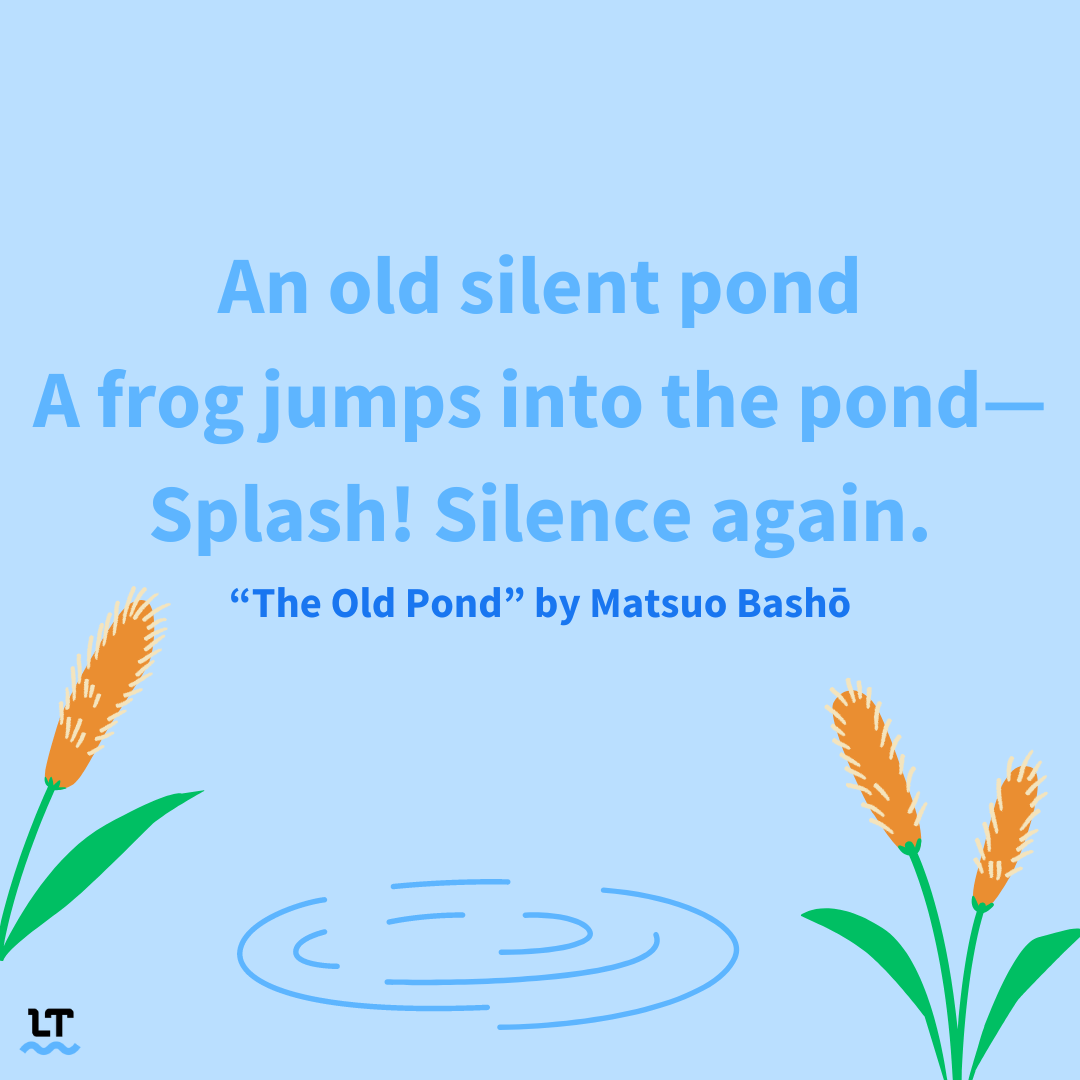Haiku: Quick Summary
A haiku is a type of Japanese poem that traditionally consists of 17 syllables arranged in a 5-7-5 pattern. In English haiku, the syllable count varies, but the poem generally aims to capture a moment vividly with as few words as possible.
Although traditional haiku focus on nature and use seasonal references, today people worldwide write haiku about anything and everything.
You’ll Learn:
What Is a Haiku?
A haiku is a type of short unrhymed poem that originated in Japan. It comprises seventeen syllables—five in the first, seven in the second, and five in the third line.
Although traditional and modern haiku center around nature, people from all over the world write haiku on diverse topics. And because language differs so vastly, so does the format of haiku.
Do you want to become a haiku master? Below we’re going to provide an easy-to-follow guide that’ll teach you everything you need to know about haiku, including its origin, formats, and tips to help you write an enthralling haiku.
What Is the Plural of Haiku?
The word haiku is a Japanese loan word and in Japanese, nouns don’t change depending on whether they’re plural or singular. Therefore, the plural of haiku is haiku. However, it is not uncommon to come across haikus as the plural form in English.

Where Did Haiku Originate?
Haiku first appeared in Japanese literature in the 17th century as a reaction to lengthy and elaborate poetic traditions of the time. These short poems originally revolved around nature, to evoke a deep (but unstated) emotional response.
Haiku started as the opening part of a long form of poetry called “renga.” The first three lines of a “renga,” known as the “hokku,” set the mood and tone for the rest of the poem while mentioning subjects like the season, time of day, and landscape. Although poets had begun writing “hokku” as individual poems during the 17th century, it wasn’t until the 19th century that the term haiku was coined by the poet Masaoka Shiki.
What Are Haiku Usually About?
Traditionally, haiku revolved around nature and required an objective description that conveyed one of the seasons and evoked a definite, yet unstated, emotional response. The focus on nature was essential to the form, and poets aimed to capture its essence in their works. Today, poets from all over the world write haiku about different topics.

How Are Haiku Formatted?
It’s important to note that in Japanese, haiku traditionally appear as a single line, while in English (and some other languages), haiku are typically printed as three lines. Let’s go over a few more distinctions.
Japanese haiku consists of 17 phonetic units, referred to as “on,” which are similar to syllables. They follow a 5-7-5 pattern and include a “kireji,” or “cutting word,” which creates a pause or a sense of closure. In English, a “kireji” can be replaced by punctuation or onomatopoeia, although it is not required. Additionally, a traditional Japanese haiku must reference a season, but this component is not always necessary in an English haiku.
The format of an English haiku is
Line 1: Five syllables
Line 2: Seven syllables
Line 3: Five syllables
Keep in mind that the lines of a haiku cannot rhyme. Additionally, not all English haiku strictly adhere to the 5-7-5 format; in those cases, they do not qualify as traditional haiku. Because English has different linguistic characteristics than Japanese, many contemporary poets compose haiku with varying syllable counts. Nevertheless, these poems are still traditional in the sense that they aim to capture a moment or experience using simple yet evocative language.
How To Write a Haiku
Now that we’ve gone over the basics of the formats of haiku, let’s get to the fun part: writing a beautiful haiku.
There are a few tips you can keep in mind that can help you write masterful haiku:
1. Be aware of your surroundings
Before you sit down to write a haiku, it’s a good idea to notice your surroundings, especially if they pertain to the topic you’ll be writing about. Ask yourself how certain things make you feel. Notice sounds, colors, sensations, and more.
2. Pre-write
Jot down notes. Brainstorm and make connections. Consider how you can write what you want to express yourself beautifully, yet concisely.
3. Use vivid imagery
Using descriptive wording is an effective way of evoking a strong image in the reader’s mind. Focus on concrete details and avoid abstract concepts.
4. Consider adding juxtaposition
Haiku sometimes include contrasting or unexpected images to create a surprising or thought-provoking effect.
4. Revise
Haiku may be short, but they still require a lot of effort and brainpower to craft. Once your draft is complete, read it aloud and make any necessary improvements.
Examples of Haiku
Below you’ll find more haiku written by Matsuo Basho, who was known as a master of haiku.
A caterpillar,
this deep in fall–
still not a butterfly.
In Kyoto,
hearing the cuckoo,
I long for Kyoto.
Taking a nap,
feet planted
against a cool wall.
How Can Writing Haiku Strengthen Your Skills as a Writer?
If you want to strengthen your overall skills as a writer, you should practice writing haiku. These poems teach you how to use descriptive and concise writing while still evoking a strong response from your audience.
Did You Know?
LanguageTool is a multilingual writing assistant that can ensure your haiku (and any other type of text) is error-free! It can also help rephrase your sentences to make them more concise, which is perfect when writing a haiku. Give it a try!

